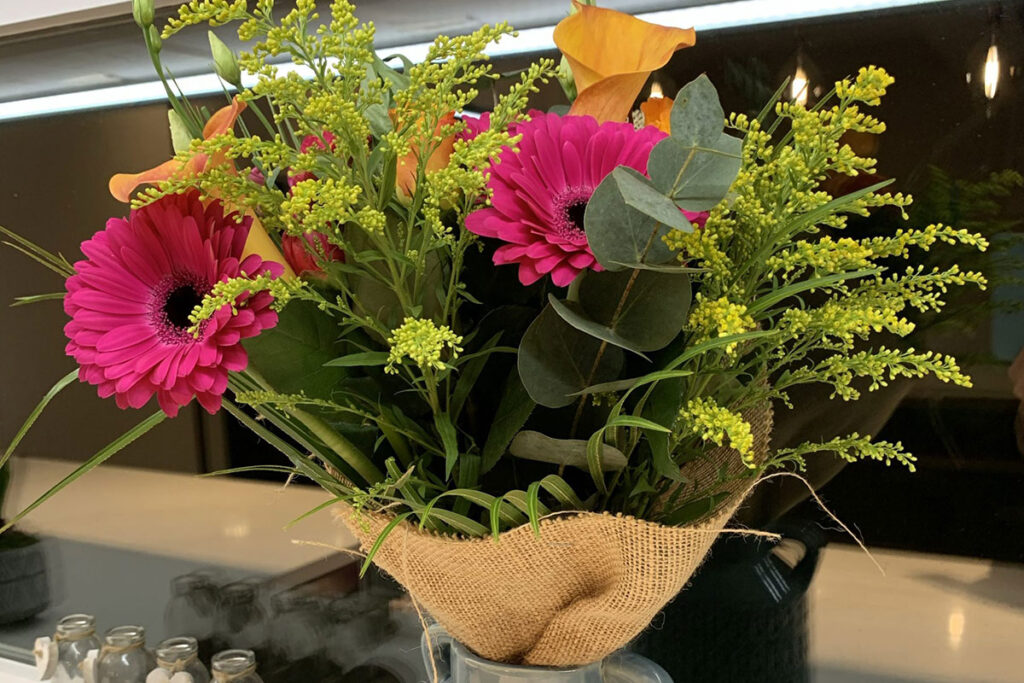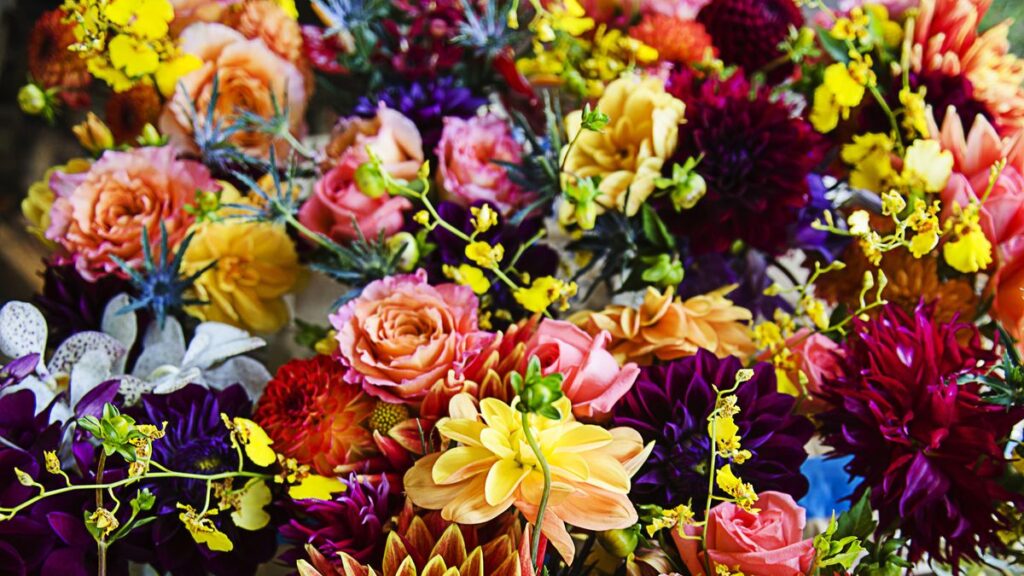The loss of a loved one is a difficult time for anyone, and finding ways to express sympathy and support can be a challenge. One way to offer comfort and solace is by sending funeral flowers. These beautiful arrangements can convey emotions and provide a source of comfort during a time of grief. Understanding the language of flowers, the art of arranging them, and personalizing the arrangements can help create a meaningful tribute to the departed and offer heartfelt condolences to those left behind.
Understanding the Language of Flowers
Flowers have long held symbolic meanings and have been used to convey emotions and messages. The history of funeral flowers delivery dates back to ancient times when they were believed to guide the soul to the afterlife. Each flower has its own unique symbolism, and understanding these meanings can help choose the right ones to express condolences.
When it comes to the language of flowers, there is a rich tapestry of meanings to explore. From the vibrant red of a rose to the delicate petals of a lily, each flower carries with it a story waiting to be told. These floral symbols have been passed down through generations, connecting us to our ancestors and their beliefs.
The History of Funeral Flowers
In many cultures, funeral flowers have played a significant role in funeral customs and rituals. In ancient Egypt, flowers were placed on tombs as a way to honor the deceased and provide comfort in the afterlife. The Egyptians believed that these flowers would guide the soul on its journey to the next world, ensuring a peaceful transition. Similarly, the ancient Greeks used flowers to honor their fallen heroes and offer solace to their families. They believed that the beauty and fragrance of flowers would bring comfort to those left behind.
Over time, funeral flower traditions have evolved, but the sentiment behind them remains the same – to express sympathy and provide comfort to the grieving. Today, funeral flowers are a way to pay tribute to the life that was lived, to celebrate the memories shared, and to offer support to those who are mourning. Click here for choosing the perfect funeral flowers to honour a loved one.

Symbolism in Flower Choices
Each flower carries its own symbolic meaning, making it important to choose the right ones for a funeral arrangement. For example, lilies are often associated with the purity of the soul and are commonly used in funeral bouquets. Their elegant white petals symbolize the innocence and grace of the departed, offering a sense of peace and serenity in times of sorrow.
Roses, with their varying colors, can convey different emotions. The classic red rose is a symbol of love and respect, a fitting choice to express deep affection for the deceased. White roses, on the other hand, represent innocence and purity, reflecting the angelic nature of the departed. Pink roses, with their gentle hue, convey grace and admiration, a heartfelt tribute to a life well-lived.
When selecting flowers for a funeral arrangement, it is important to consider the personality and spirit of the departed. Did they have a favorite flower or color? Did they have a zest for life that could be captured in vibrant blooms? Adding these personal touches to the arrangement can create a meaningful tribute, honoring the unique qualities of the individual and bringing comfort to those who mourn.
The language of flowers is a powerful tool for expressing emotions when words fail. It allows us to communicate our deepest feelings and offer solace in times of grief. Whether it is the delicate petals of a lily or the vibrant hues of a rose, funeral flowers serve as a reminder that love and beauty endure even in the face of loss.
The Art of Arranging Funeral Flowers
The way funeral flowers are arranged can greatly impact their overall appearance and meaning. Paying attention to the colors, textures, and overall design can create a beautiful and impactful tribute.
Funeral flowers hold a significant role in honoring the life of a loved one who has passed away. They serve as a visual representation of love, respect, and remembrance. The art of arranging funeral flowers goes beyond simply placing blooms together; it involves careful thought and consideration to create a meaningful display that captures the essence of the departed.

Selecting the Right Flowers
When choosing flowers for a funeral arrangement, it’s important to consider the deceased’s personality and preferences. If they had a favorite flower or color, incorporating it into the arrangement can add a personal touch. For instance, if the departed had an affinity for roses, a bouquet of elegant red roses can symbolize love and admiration.
Moreover, selecting flowers that are in season and of good quality is crucial to ensure they remain fresh throughout the funeral service. Seasonal flowers not only offer a wider range of options but also reflect the natural beauty of the time of year. Spring may bring delicate tulips and daffodils, while autumn offers warm hues of chrysanthemums and sunflowers.
Techniques for Arranging Funeral Flowers
Arranging funeral flowers is an art form that requires skill and creativity. There are various techniques that can be used to create beautiful arrangements, each with its own unique effect.
Layering different blooms is a popular technique that adds depth and dimension to the arrangement. By combining flowers of varying heights and sizes, the display becomes visually captivating and visually pleasing. For example, pairing tall lilies with smaller roses and daisies can create an eye-catching contrast.
Incorporating greenery is another technique that can enhance the overall aesthetic of the funeral flowers. The lush foliage acts as a backdrop, providing a sense of balance and harmony. Whether it’s delicate ferns, elegant eucalyptus, or vibrant ivy, the addition of greenery adds texture and complements the flowers.
Furthermore, balancing the size and shape of the flowers is essential in creating a harmonious composition. Mixing large, focal blooms with smaller, filler flowers creates a visually pleasing arrangement. The focal flowers draw attention, while the filler flowers add volume and create a sense of fullness.
Lastly, the color palette chosen for the funeral flowers can convey specific emotions and sentiments. Soft pastels, such as pale pink and lavender, evoke a sense of tranquility and serenity, while vibrant hues like red and orange symbolize passion and energy. The choice of colors should align with the personality and preferences of the departed, as well as the overall atmosphere of the funeral service.
Arranging funeral flowers is a delicate and meaningful process that requires attention to detail and a deep understanding of the departed’s life and legacy. By selecting the right flowers, employing various techniques, and considering the overall design, funeral flowers can become a beautiful tribute that honors the memory of the loved one.
Personalizing Funeral Flowers
Personalizing funeral flowers can add a unique and heartfelt touch to the arrangement. It allows for a personalized tribute that celebrates the life of the deceased in a meaningful way. While funeral flowers are traditionally a symbol of sympathy and condolences, incorporating personal touches can create a more personalized and comforting atmosphere.
Incorporating Personal Touches
There are several ways to incorporate personal touches into funeral flowers. One option is to include items that reflect the deceased’s hobbies, interests, or personality. For example, if they were an avid gardener, including small gardening tools or packets of seeds can be a meaningful addition. These items not only add a personal touch, but they also serve as a reminder of the deceased’s passions and interests.
Another way to personalize funeral flowers is by incorporating family photos or small mementos amongst the flowers. Placing these cherished items within the arrangement creates a visual tribute that honors the memory of the loved one. It allows family and friends to reminisce and remember the special moments shared with the deceased.
Furthermore, personalized ribbons or tags can be attached to the flowers, featuring the name or a special message for the deceased. This adds a personal and intimate touch to the arrangement, allowing mourners to feel a deeper connection to the flowers and the memory of their loved one.
Choosing Colors and Textures
The choice of colors and textures can greatly impact the overall aesthetic of funeral flowers. While white flowers are commonly associated with funerals, incorporating different colors can create a more vibrant and celebratory atmosphere. Warm and vibrant colors, such as reds, oranges, and yellows, can convey a sense of celebration of life. These colors symbolize energy, passion, and the joyous moments shared with the deceased.
On the other hand, softer and more muted tones, such as pastel pinks, blues, and purples, can evoke a feeling of tranquility and peace. These colors create a serene ambiance, providing comfort and solace to mourners during their time of grief.
In addition to colors, the choice of textures can also enhance the visual appeal of funeral flowers. Incorporating different textures, such as velvet petals, delicate lace, or wispy foliage, can create visual interest and depth to the arrangement. The combination of soft and velvety petals with delicate and wispy foliage adds a touch of elegance and sophistication to the overall design.
By carefully selecting colors and textures, funeral flowers can be transformed into a beautiful and personalized tribute that not only honors the memory of the deceased but also provides comfort and solace to those grieving.
Conveying Emotions through Flowers
Funeral flowers are not only a beautiful tribute, but they also have the power to convey emotions and offer comfort during times of grief.
Flowers for Comfort and Solace
Certain flowers, such as lilies and chrysanthemums, are often associated with funerals and can provide comfort and solace to the grieving family. These flowers symbolize purity and eternal life, offering a sense of peace during a difficult time. Including a variety of flowers with calming scents, such as lavender or chamomile, can also promote a sense of tranquility.
Flowers for Love and Remembrance
Flowers can express love and remembrance in a powerful way. Roses, with their timeless beauty, are often associated with love and can be included in funeral arrangements to signify the love felt for the departed. White roses, in particular, symbolize purity and innocence and can serve as a beautiful tribute to a life well-lived.
Etiquette for Sending Funeral Flowers
Sending funeral flowers is a thoughtful gesture that requires careful consideration of timing and appropriate messages.
When to Send Funeral Flowers
It is customary to send funeral flowers to the funeral home or church before the service. Ideally, they should arrive a few hours before the service begins to ensure they are displayed properly. If you are unable to attend the service, sending flowers to the family’s home after the funeral can still offer a heartfelt gesture of condolences.
Appropriate Messages to Include with Funeral Flowers
When sending funeral flowers, including a personal message can provide additional comfort to the grieving family. Keep the message simple and sincere, offering words of sympathy and support. Avoid cliches and generic phrases, instead opting for a heartfelt message that reflects your genuine condolences.
Whether it’s understanding the language of flowers, the art of arrangement, or personalizing the tribute, funeral flowers are a thoughtful way to express sympathy and offer comfort during a difficult time. By creating meaningful arrangements that reflect the personality and spirit of the departed, these floral tributes can serve as a lasting symbol of love and remembrance.
